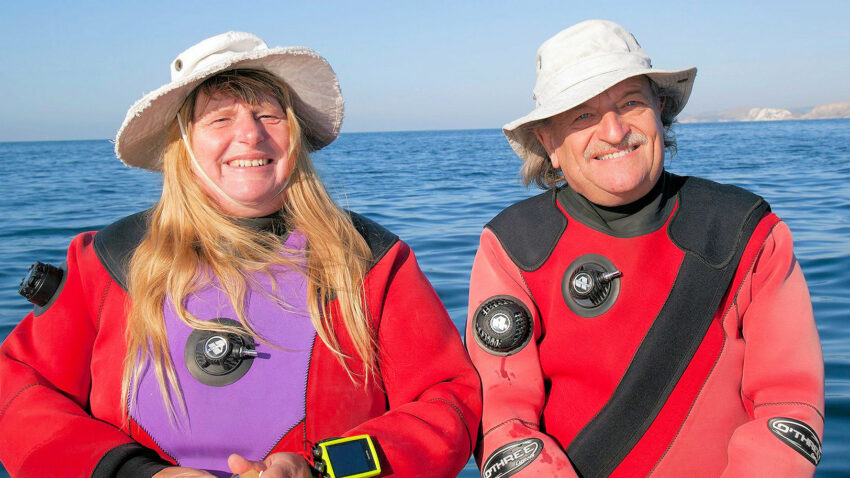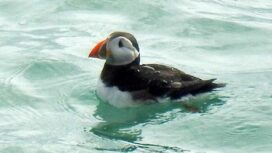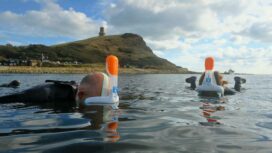Wreck detectives Sheilah and Martin Openshaw have solved their hardest case ever following the discovery of two engines from a wartime plane in Worbarrow Bay near Tyneham by a local diver.
Back in 2019, not only was the current in the bay so strong that it carried diver John Coward away from the wreckage in minutes, he didn’t have an accurate position fix on the plane either – just a brief video and a few photographs.
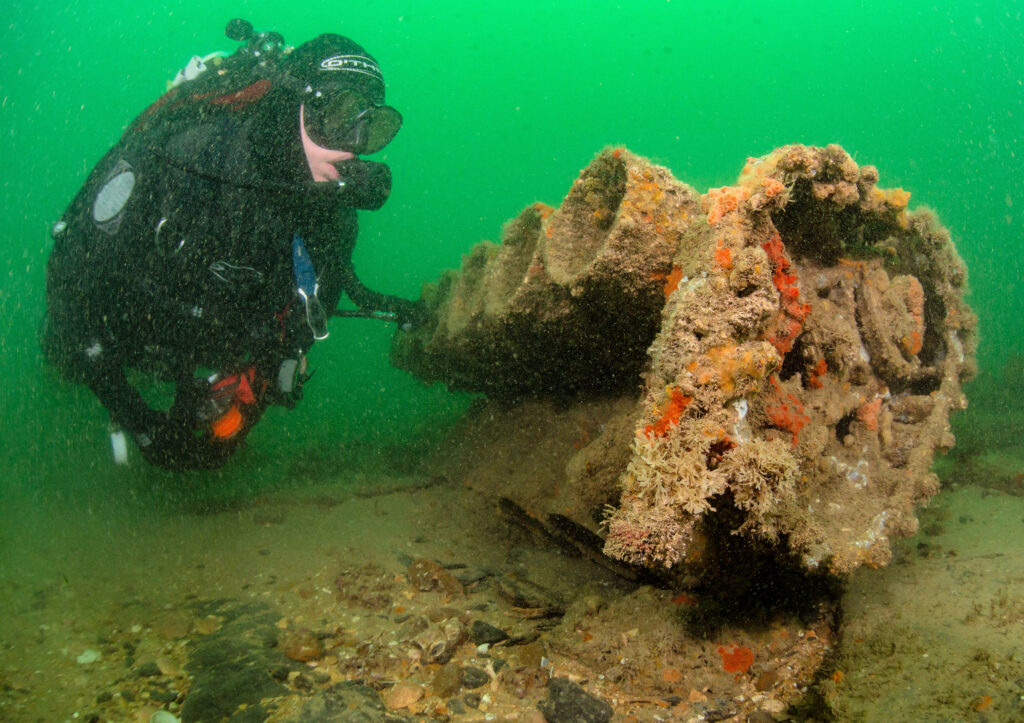
John Coward first discovered a V12 engine in Worbarrow Bay in early 2019
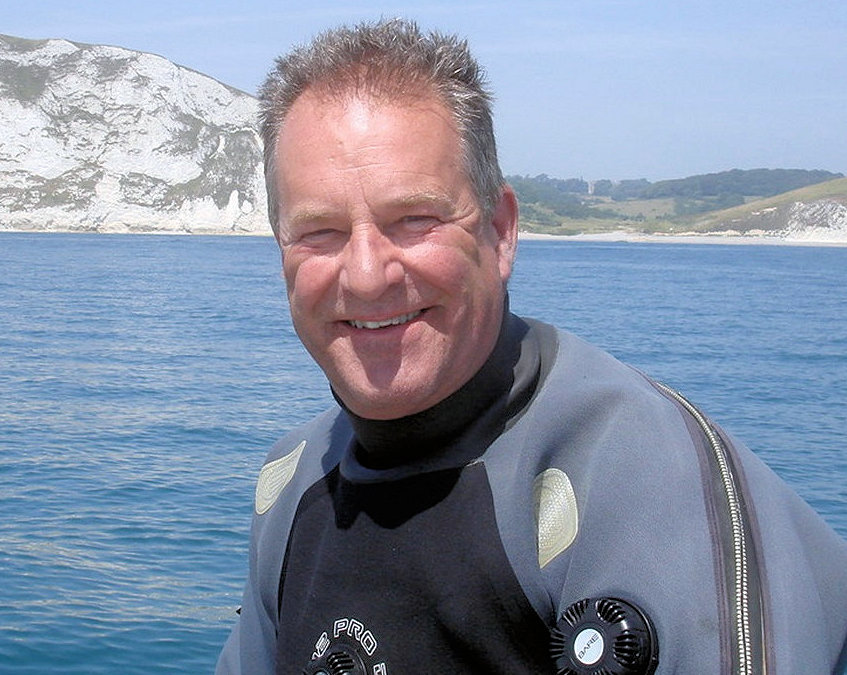
Dorset diver John Coward has a penchant for the Isle of Purbeck
Retirement spent studying underwater
But when John returned to shore at Kimmeridge, he met British Sub Aqua Club members Sheilah and Martin, who are spending their retirement studying the underwater world of the Dorset coast and showed them what he had found.
That led to years of research and documentation, which has now identified the plane as a German World War Two Messerschmitt fighter.
The team also discovered the identities of the pilots who flew it, the RAF ace who shot it down and the intended target of the bombing raid on the day that the Battle of Britain was fought over Purbeck.
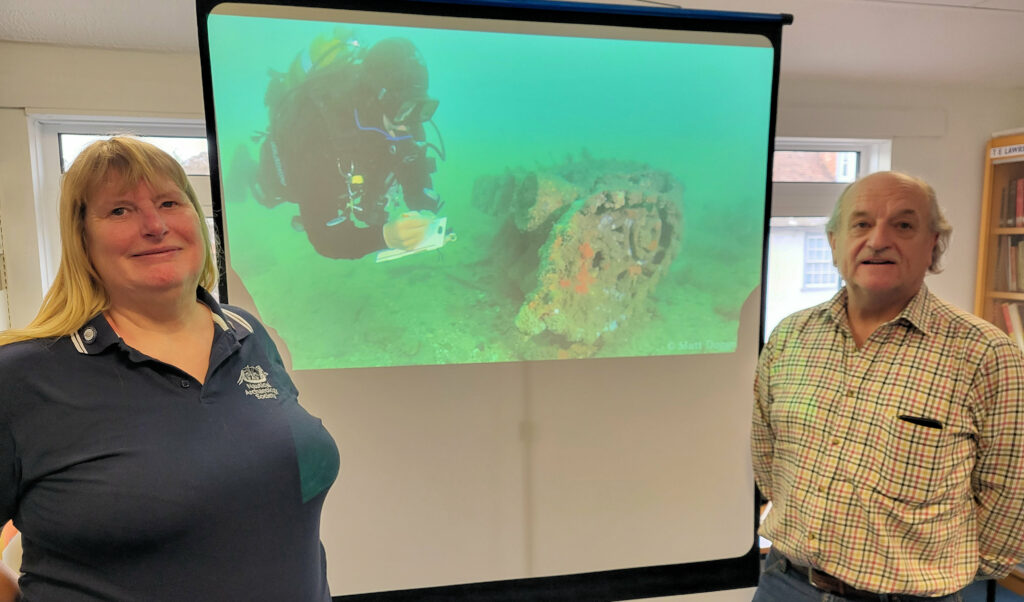
Sheilah and Martin Openshaw talked about the Worbarrow Messerschmitt at Wareham Library
Wareham and Purbeck Spitfire Fund raised £1,000
Sheilah, who presented their findings to a group of enthusiasts at Wareham Library, said:
“Everyone knows that the Battle of Britain was fought over London and the Kent coast in 1940 – but everyone is wrong. It was fought over the rest of Britain too and in early October 1940 it was fought over Purbeck.
“Britain needed Spitfire planes to face the threat from Hitler’s Luftwaffe and asked the country to raise funds for them – the ‘whip round that won the war’.
The Wareham and Purbeck Spitfire Fund had very quickly raised £1,000 (£50,000 at today’s prices); Wareham’s Duke of Wellington pub alone raised £1 and 12 shillings with a single darts tournament.
“They were needed – after a week of wind and rain forced a lull in planned bombing missions across the Channel, on Sunday 6th October 1940 the skies cleared of cloud and filled instead with wave after wave of bombers.
“The following day there were five major attacks on England, four on London and one over Dorset, where there were many potential targets for the Luftwaffe including Army and RAF bases, fuel depots and ordnance factories. The skies over Dorset were chaotic on that day to say the least.”
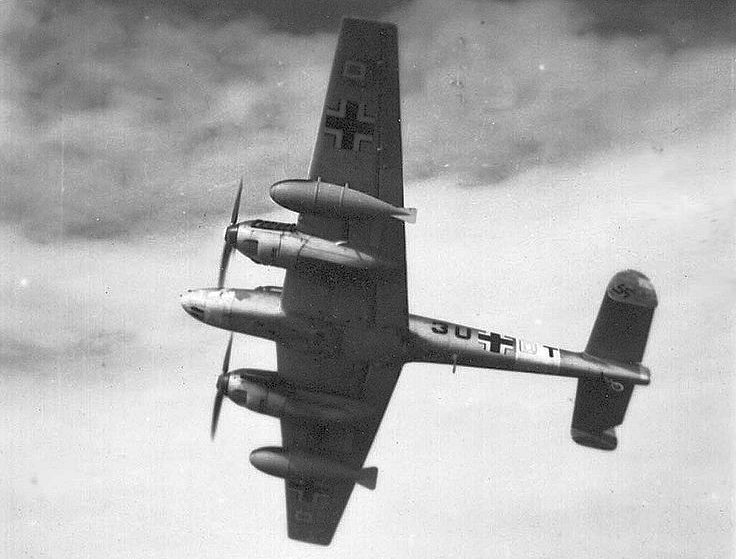
The Messerschmitt Bf110 fighter bomber plane in action

Matthew Burleigh, a self confessed aircraft nerd, was hooked on the project
Wreck first thought to be the Wooden Wonder
When they were originally shown the images of what John had discover in Worbarrow Bay, John and Sheilah didn’t know what kind of plane it might be, early thoughts veering towards a de Havilland Mosquito, an RAF plane nicknamed the Wooden Wonder as it was one of only a few planes of the 1940s not made out of metal.
But their godson Matthew Burleigh, an aerospace engineer and a self confessed aircraft nerd, was shown the images over a lunch and was hooked on the project from that moment.
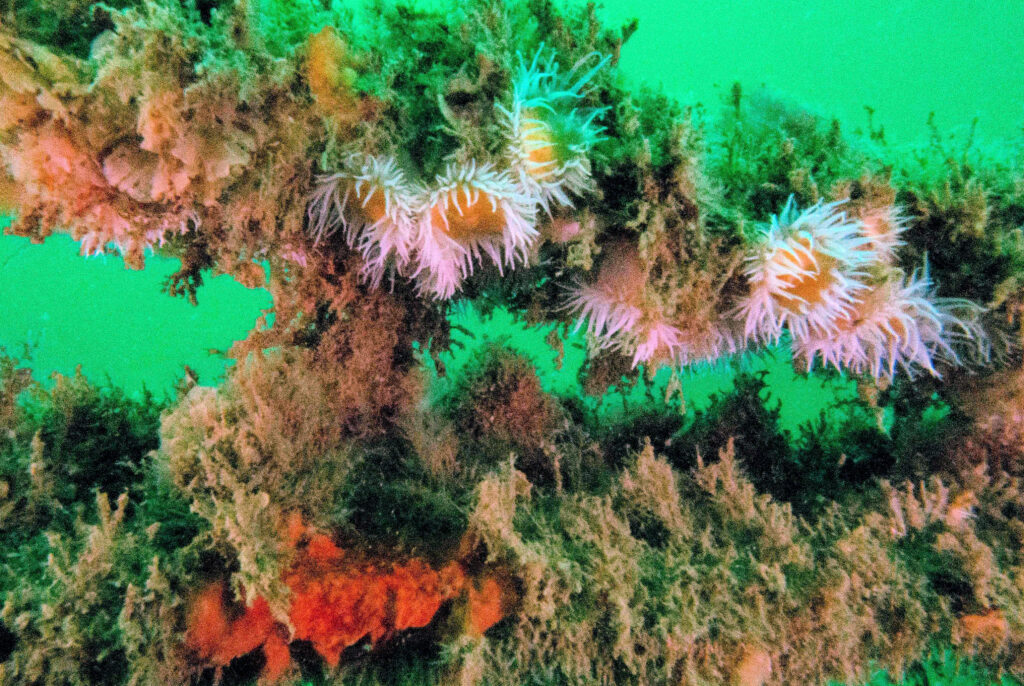
Sandalled anemones growing on the plane’s main wing spar
Determined to find the answers
Sheilah said:
“Initially, we didn’t know what the plane was, nor where they were flying to, when it was shot down, who shot it down, what state it was in on the seabed – there were so many questions, but we were determined to find the answers to all of them.
“Having discounted the de Havilland Mosquito theory, as the chances of a lightweight wooden plane surviving 80 years underwater were slim to none, Matthew started looking at the V12 engines which John had photographed and found they had an inverted V design which was used by one nation in particular – Germany.
“Studies of the engine gearbox and the main wing spar showed there was only one match – the Messerschmitt Bf110, but we still had no GPS position on the wreck and the approximate site was within the MoD Lulworth firing range, so boating and diving was restricted to weekends and school holidays.”
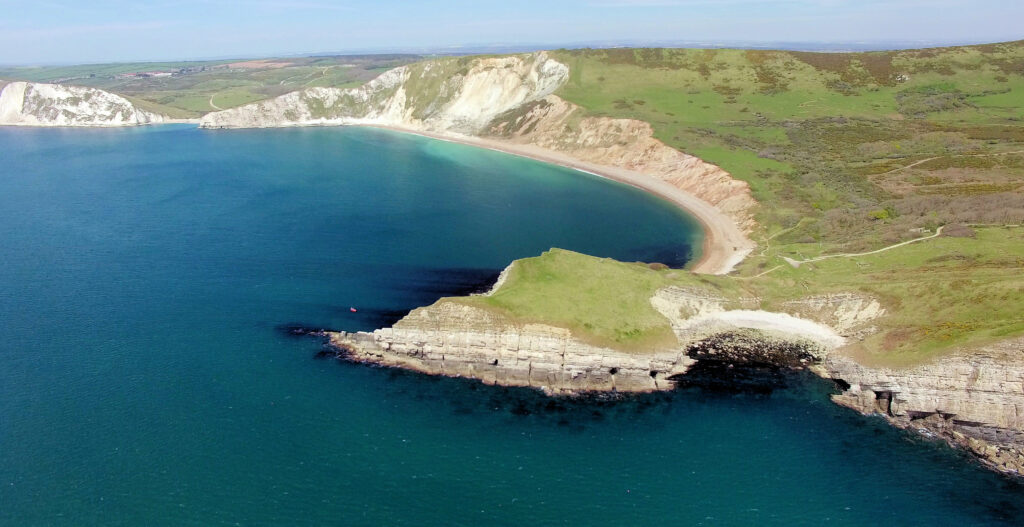
Worbarrow Bay from above, where the German pilot landed his stricken plane
Messerschmitt crashed into sea at Lulworth
Eventually, in September 2019, John managed to relocate the wreck, log a position and carry out initial dives which confirmed that his plane was indeed a Messerschmitt Bf110 fighter bomber, but then autumn gales put paid to further dives in 2019 and lockdown followed soon afterwards.
But this didn’t stop Martin and Sheilah carrying on with their detective work and found wartime reports from the Chief Constable of Dorset which logged a Messerschmitt crashing into the sea at Lulworth at 4.30 pm on Monday 7th October 1940 with two occupants, both taken prisoner.
Luftwaffe loss records listed multiple planes which didn’t return that day, several making reference to ‘Joville’ and eventually Sheilah realised they were on route to the Westland factory at Yeovil where Lysander aircraft were being built.
A few German bombers which escaped the RAF, released 1,600 bombs over Sherborne and Yeovil, hitting an air raid shelter and killing 100 people. By the end of the day, the Luftwaffe had lost 21 aircraft and the RAF 17, although only one British pilot lost his life.
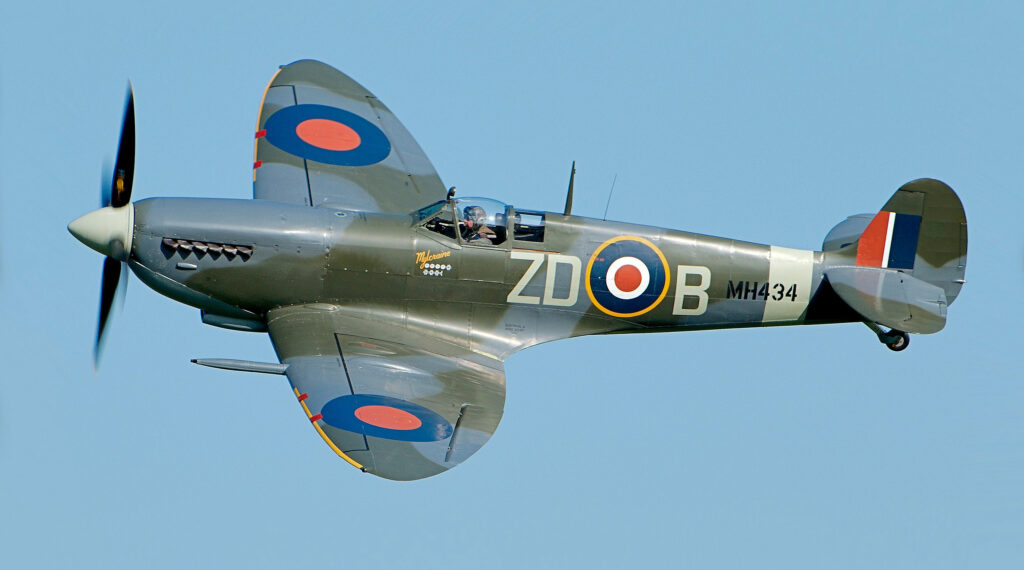
The Spitfire was the dream plane of World War II
Pilot detained by locals in the pub
Sheilah said:
“The Spitfire was the dream plane of the war, it had developed from the racing planes of the 1930s and it was like driving an F1 car today – the pilots were ready to be in the air 90 seconds after being scrambled and were treated like heroes, celebrities of the day.
“They were also asked to write a report on their flight after landing back at base. One Spitfire pilot from 609 Squadron Warmwell who might have shot down our plane was Flight Lieutenant Frankie Howell, who claimed one kill on the day and was then shot down himself.
“He managed to land wheels up in a field south of Shaftesbury, but never made it back to Warmwell that day, as he was detained by thankful locals in the pub and didn’t get back to write his report until 4 am, ever so much the worse for wear!”
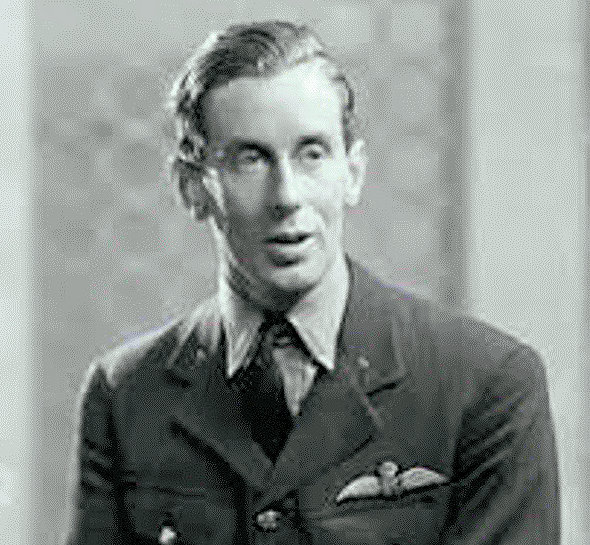
Flying Officer John Dundas is thought to have finished off the Messerschmitt
Attack on a straggler with no protection
He was eventually discounted from having shot down the Worbarrow Messerschmitt as he was some distance from the coast at the time it crashed, and he described his kill as being ‘destroyed’.
Further investigation found a report from 24 year old Flying Officer John Dundas, who described his attack on a ‘straggler who had no protection astern’.
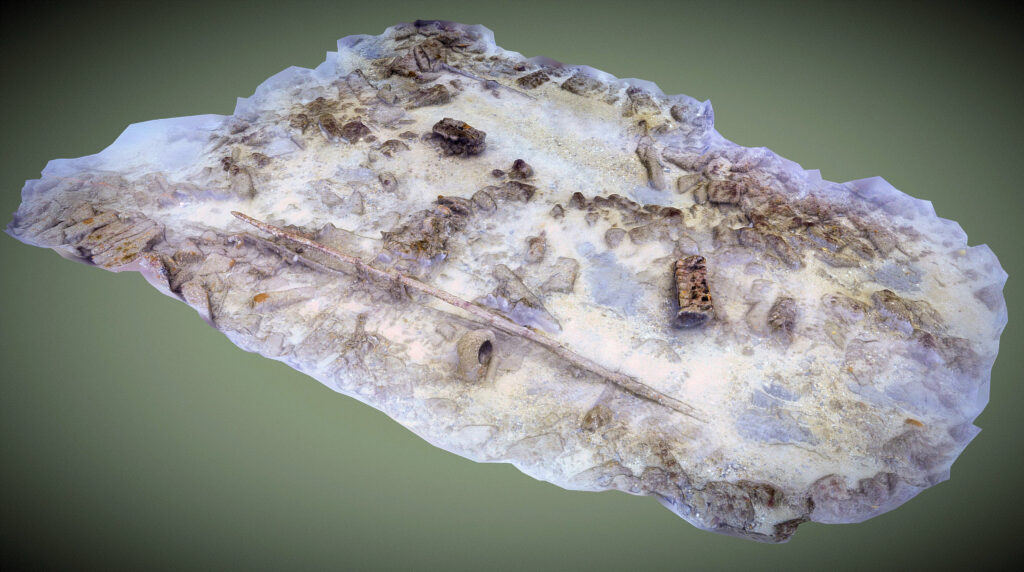
3D computer model of the remains of the Messerschmitt Bf110
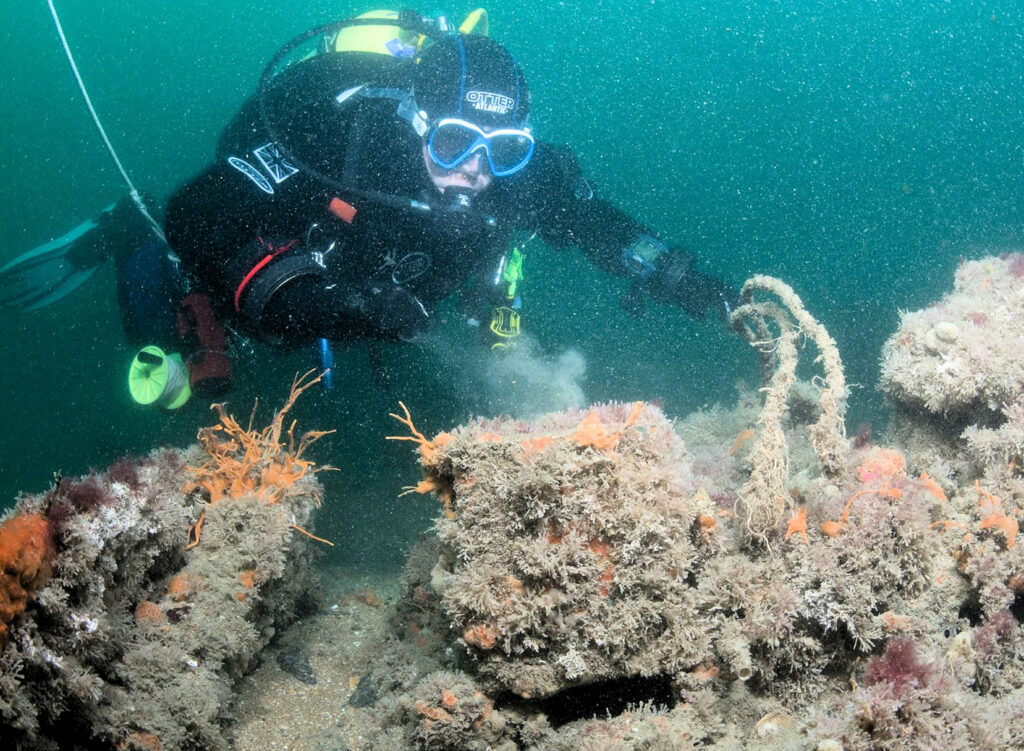
Every inch of the plane’s structure has been carefully documented
Tried to finish him off with short attacks
His report read:
“I fired about 12 to 14 secs. ammunition into this enemy aircraft from astern. His port motor soon started to stream smoke and glycol and soon afterwards his starboard motor followed suit.
“I tried to finish him off by a series of short attacks but at this time was hit by an explosive cannon shell from astern. My aircraft spun and I was obliged to force land at Warmwell.”
John Dundas was only to live another 52 days. On Thursday 28th November 1940 he shot down flying ace Major Helmut Wick, who was credited with destroying 56 RAF planes, but was shot down himself by Wicks’ wingman and crashed into the Channel off the Isle of Wight.
Martin and Sheilah were also able to discover the identities of the two crew from the Messerschmitt, Lieutenant Botho Sommer and radio operator Sergeant Paul Prauler.
Both were taken prisoner and interrogated; Sergeant Prauler said he was glad to be out of the war and gave up a lot of useful information about the Nazis plans to develop night fighter planes.
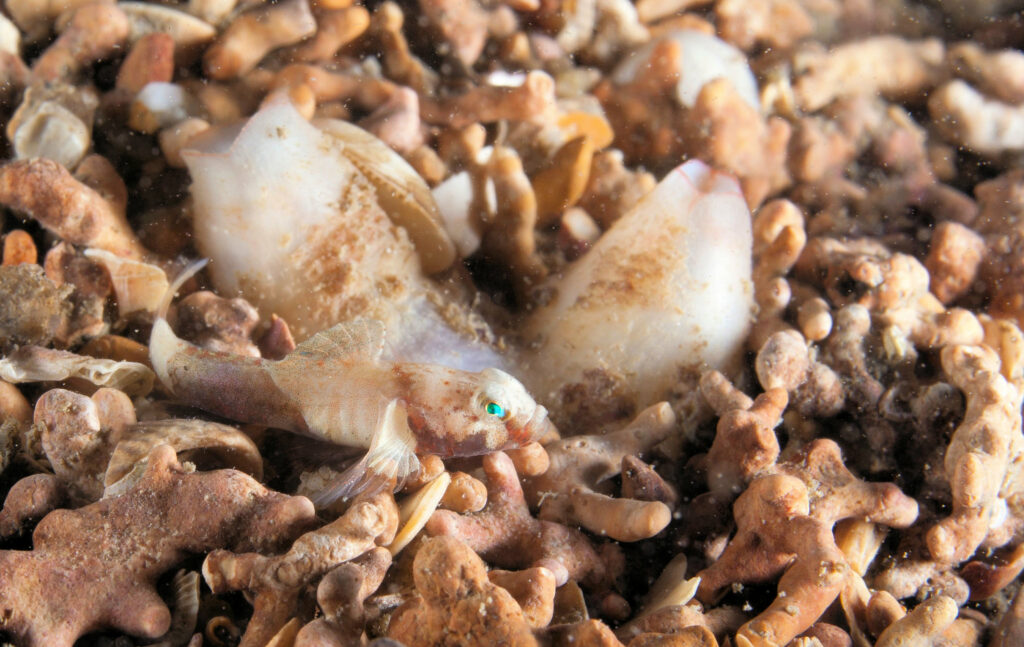
Europe’s smallest fish, the Guillet’s guppy, makes itself at home around the wreckage
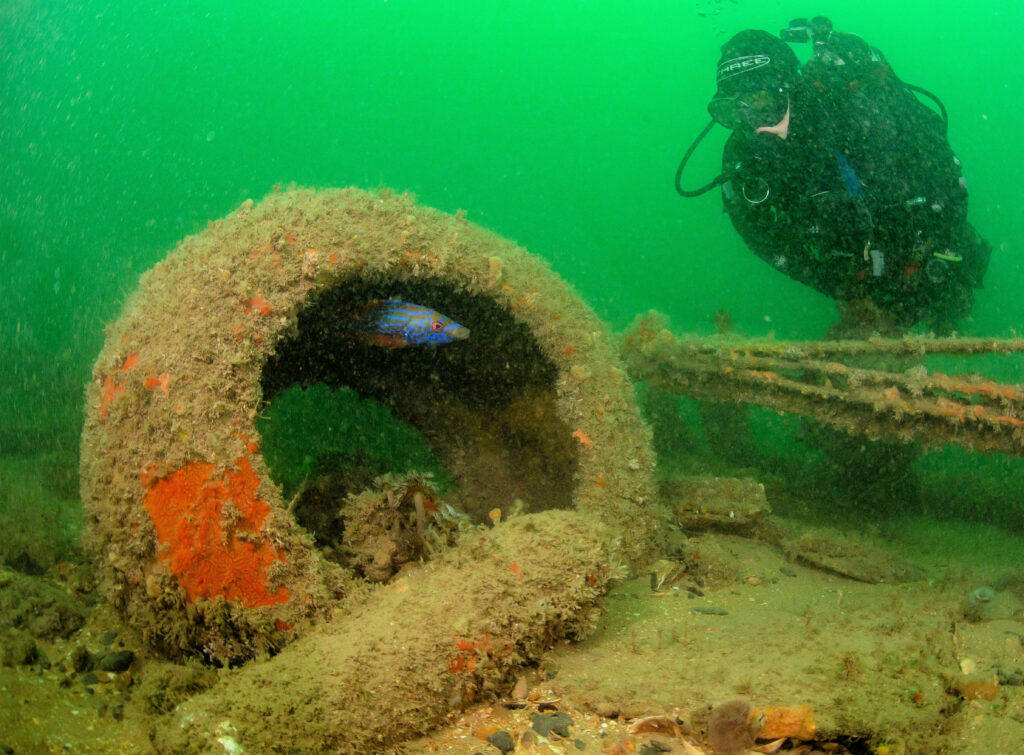
A male cuckoo wrasse peers out from the plane’s starboard tyre
£5,000 project to inspect and film the wreck
Despite the severe interruption to dives on the wreck through the Covid lockdowns, the MoD, RAF historical branch and Nautical Archaeological Society all approved of the £5,000 project to inspect, film and photograph the wreck and to survey the marine life which now inhabits it.
Much of the aluminium frame has corroded away; what is left is in a fragile condition and it may not be much longer before the main wing spar falls away or is damaged from becoming snagged on fishing gear.
Despite this, much of the plane is still in a recognisable state and is home to sponges, spiral fan worms, anemones, Europe’s smallest marine fish, the Guillet’s goby, black bream and an occasional lobster.
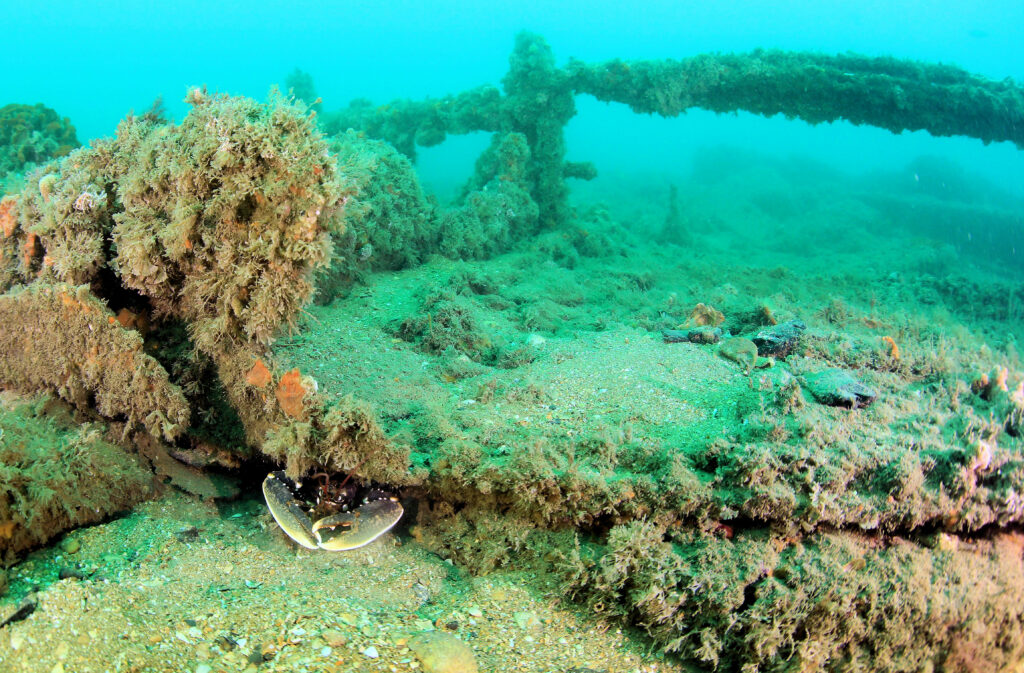
A lobster takes shelter in its burrow beneath the port wing

Marine biologist and underwater photographer Matt Doggett
“We will keep on diving!”
Marine biologist Matt Doggett said:
“We have documented the wreck site with video, stills and 3D photogrammetry. The find has been reported to RAF Historical Branch who have confirmed the team’s findings as accurate.
“Year after year this amazing part of the Dorset coast reveals to us more secrets of its natural, geological and anthropological history. We will keep on diving!”
Further information
- The full report by the team is available to download from the British Sub-Aqua Club website
